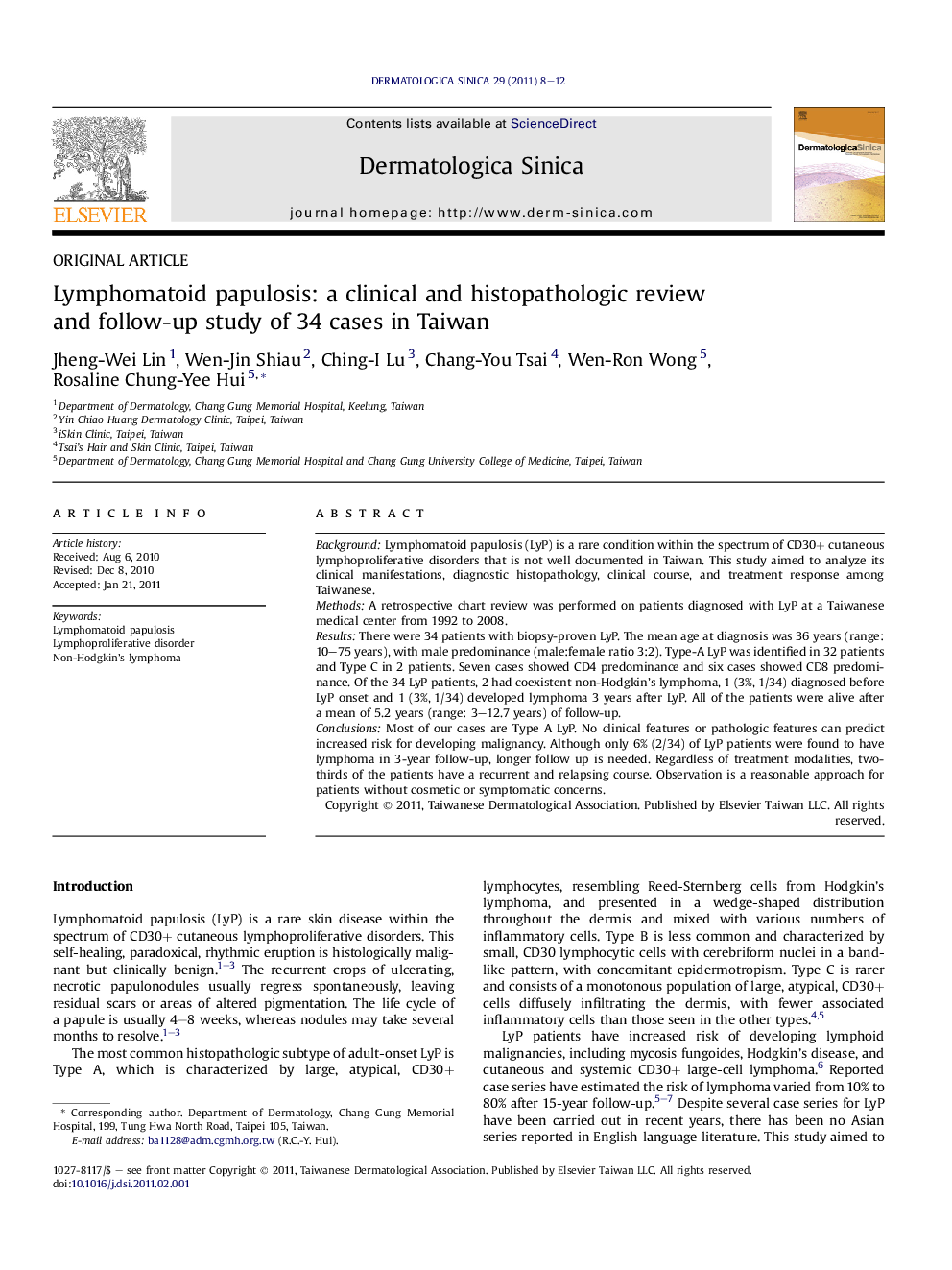| Article ID | Journal | Published Year | Pages | File Type |
|---|---|---|---|---|
| 3196599 | Dermatologica Sinica | 2011 | 5 Pages |
BackgroundLymphomatoid papulosis (LyP) is a rare condition within the spectrum of CD30+ cutaneous lymphoproliferative disorders that is not well documented in Taiwan. This study aimed to analyze its clinical manifestations, diagnostic histopathology, clinical course, and treatment response among Taiwanese.MethodsA retrospective chart review was performed on patients diagnosed with LyP at a Taiwanese medical center from 1992 to 2008.ResultsThere were 34 patients with biopsy-proven LyP. The mean age at diagnosis was 36 years (range: 10–75 years), with male predominance (male:female ratio 3:2). Type-A LyP was identified in 32 patients and Type C in 2 patients. Seven cases showed CD4 predominance and six cases showed CD8 predominance. Of the 34 LyP patients, 2 had coexistent non-Hodgkin’s lymphoma, 1 (3%, 1/34) diagnosed before LyP onset and 1 (3%, 1/34) developed lymphoma 3 years after LyP. All of the patients were alive after a mean of 5.2 years (range: 3–12.7 years) of follow-up.ConclusionsMost of our cases are Type A LyP. No clinical features or pathologic features can predict increased risk for developing malignancy. Although only 6% (2/34) of LyP patients were found to have lymphoma in 3-year follow-up, longer follow up is needed. Regardless of treatment modalities, two-thirds of the patients have a recurrent and relapsing course. Observation is a reasonable approach for patients without cosmetic or symptomatic concerns.
